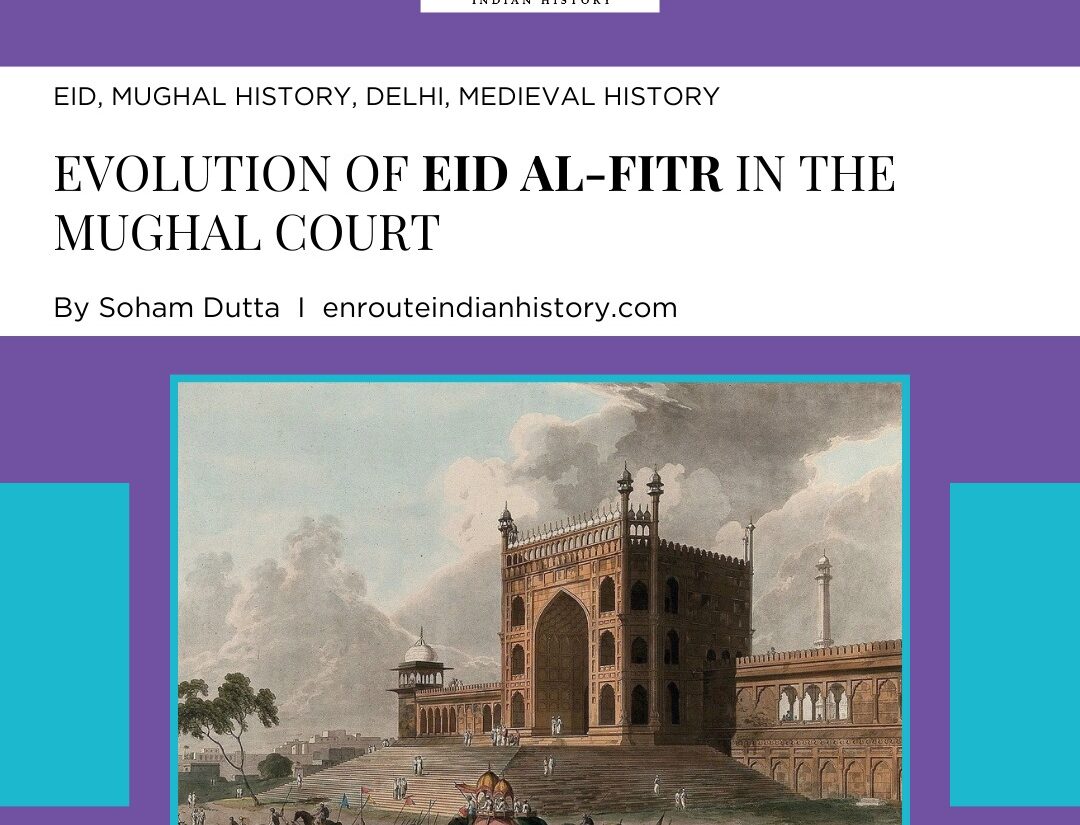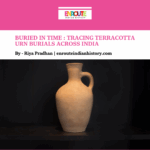How Braj Bhasha Shaped Mughal Aesthetics and Courtly Culture
- iamanoushkajain
- May 7, 2025

By Vaibhavi Dhanwar
Language serves as a vessel for tradition, beliefs, and everyday life, while literature captures human experiences, emotions, and stories across generations. Together, they provide a window into historical contexts and continuity of human thought. The Brajbhasha dialect originated in the cities of Mathura and Vrindavan, located in the Braj region, which encompasses present day Mathura, Agra, and nearby areas in Uttar Pradesh. During the Middle Ages, Brajbhasha was predominantly recognized as the language used by poets to compose hymns and devotional songs dedicated to Krishna and Radha. Its grammatical rules were well defined, as the language gained popularity among poets and the culturally refined. Brajbhasha’s charm lies in its vibrant poetry and beautiful expressions of love and devotion.
Later in its name hides its broader distribution over the entire Indian subcontinent, except certain regions in the southern half of the Indian peninsula during the seventeenth and eighteenth centuries which can be considered its golden age only to be superseded by the popularity of khadi boli based Hindi language.
Cultural unfolding of braj bhasha in mughal court
Mughal dance, a prominent art form, was significantly influenced by Brajbhasha poets, who integrated it into their devotional compositions. Courtly dance played a crucial role in the performance of their melodies and lyrics, reflecting its deep connection to their artistic expression. Even Mughal emperors participated in dance performances within the imperial court. The widespread acceptance of Braj bhasha based devotional songs, known as bhajans, contributed to the emergence of a distinct musical tradition that blended Persian and Indian influences within Mughal cultural practices.
With the advent of the Mughals in India, they were faced with a literary culture that was rich and varied. Hindi, particularly in its early stages, had already received patronage from Indo Muslim elites before the advent of Brajbhasha literature and the establishment of the Mughal Empire in the sixteenth century. This cultural exchange provided a platform for the development of Hindi poetry, which was shaped by a syncretism of local traditions and the impact of Persian and Arabic literary traditions.
Brajbhasha, as a literary and poetic language, was shaped not only by indigenous creative forces but also through cross cultural exchanges with Indo-Muslim courtly cultures. While nationalist literary histories often romanticize its genesis from purely Indian sources, the fact of the matter is otherwise. Though braj bhasha was not just a language of communication but also the cultural fabric of the period, acting as a bridge between popular practices and refined expressions characteristic of the courts. The language gained powerful resonance within devotional movements, especially the Bhakti movement, which employed it as a vehicle to convey spiritual yearning and devotion to the divine. Poets such as Surdas and Tulsidas imbued Brajbhasha with a poetical and passionate tone, thereby rendering it a medium that embodied both aesthetic beauty and religious fervor. Braj bhasha was popularized by the implication of poetry.
Riti poetry in Braj bhasha flourished as an artistic expression deeply intertwined with the grandeur of the Mughal courts. The courtly atmosphere shaped its themes elevating ideals of grace, elegance, and poetic playfulness. As argued by Sanskriti Razdan in Contribution of Brajbhasha Poets to the Mughal Court, Jahangir’s praise for a group of Hindi poets suggests that Brajbhasha may have been more commonly spoken during his reign. Including master poecist Keshavdas shows good influence on the Mughal court under Jahangir. This is especially clear in Rasikpriya and Kavipriya, two of his most well known compositions. During the Mughal era, Keshavdasa’s rich tradition thrived. Poet Vishnudas began composing Brajbhasha adaptations of stories from the Mahabharata and Ramayana.
The pre modern legacy of Hindi literature, particularly its sensuous and erotic poetry, remains critically underexplored. Hindi’s Riti past often views it through a colonial or nationalist lens, interpreting it as merely reflective of a decadent, pleasure seeking society. Hence providing a lens of power play in mughal court, the following aspects will be explored in this paper.
The Vernacular Perspective on Mughal Nobility
In the Mughal period, Braj Bhasha became a sophisticated and revered language, assuming significant importance in royal courts, even when Persian was used for administration. When Persian reigned supreme in domains like administration, diplomacy, and writing history, Braj Bhasha established a noble stature for itself as the language of poetry, music, and devotional writing, leaving an imprint on the nobles as well as on the common folk.
The word of the Mughal state unfolds in rich layers, and a closer look at its society is an invaluable source of study for history. Take the Braj Bhasha war stories, for instance; they offer a distinctive insight into the war of succession of the Mughal emperor’s sons and offer a different perspective on the Mughal princesses. Contrary to the Persian writings that usually present them as part of an invincible imperial presence, these vernacular records present them as vulnerable individuals, illuminating aspects of their lives that Persian chronicles tend to ignore. The Persian accounts mostly depict Mughal society as completely dominated by Persian culture with no space for indigenous traditions like the Braj Bhasha literary culture. Though later in the following, it will be seen how it had fine significance in the literature of mughal era.
As Shreekant Kumar Chandan contends, the Mughal imperial court and the Mughal ruling elite, such as princes, senior mansabdars, and even junior administrators, contributed to the literary stature of Braj Bhasha. Their patronage was more than patronage of vernacular poets; more than that, some of these Mughal courtiers actively engaged in the literary tradition of Braj Bhasha, becoming poets themselves.
Humayun is credited with the patronage of Braj Bhasha songs, which are extremely close to poetry, and have a tendency to blur the lines between the two. Several Braj authors found a place in his court, but it was the poet Narhari who was notable, mainly due to the extensive documentation of his work. His literary career blossomed under Islam Shah Sur, and he went on to become the esteemed court poet under Akbar. Akbar himself was an ardent lover of music, especially dhrupad compositions in Braj Bhasha, which flourished in the shelter of his court. The great musician Tansen, one of Akbar’s court’s most renowned figures, needs no introduction. Music was so respected that Abul Fazl’s Ain-i-Akbari contains an entire chapter on Bishnupad (Songs to Vishnu).
Moving further, prominent courtiers like Todar Mal, the revenue minister of Akbar, and Faizi, the Persian poet laureate of the emperor and Abul Fazl’s brother, are famous for their work in Braj poetry. It is even reported that Akbar himself composed a few Hindi songs as claimed by Sanskriti Razdan. As Abul Fazl said, the emperor possessed a naturally inspired temperament, with a refined sense of poetic expression in both Hindi and Persian, and a keen sense of fine literary devices.
The Braj Bhasha poets felt a part of a vernacular literary community or a wide community of poets and referred to themselves as kavi kul. The society was not homogeneous and included people of different castes and religious beliefs. The Braj Bhasha literary culture was in a way an additional channel through which the syncretic cultural tradition could be created.
The Mughal emperor’s patronage of Braj Bhasha poetry played a crucial role in shaping a distinct Mughal cultural identity. As a key element of courtly culture, Brajbhasha poetry helped bridge the gap between the aristocracy and common people in a society defined by rigid social hierarchies. By supporting poets whose works embodied cultural inclusivity, the Mughals fostered a synthesis of linguistic, thematic, and conceptual traditions, distinct from both Persian and Sanskrit influences. This patronage not only reinforced a unique cultural identity but also fostered mutual understanding between the ruling elite and the broader society, reflecting the empire’s integrative nature.
References
[Sanskriti razdan, 1800]. Contribution of Brajbhasha Poets to the Mughal Court, Journal of Literature & Aesthetics, 300, p.45
[Chandan, S.K., 2014]. Introducing Braj bhasha archive for the study of the history of Mughal India. International Journal of Management Sociology and Humanity, 5(3), pp.354-359.



















